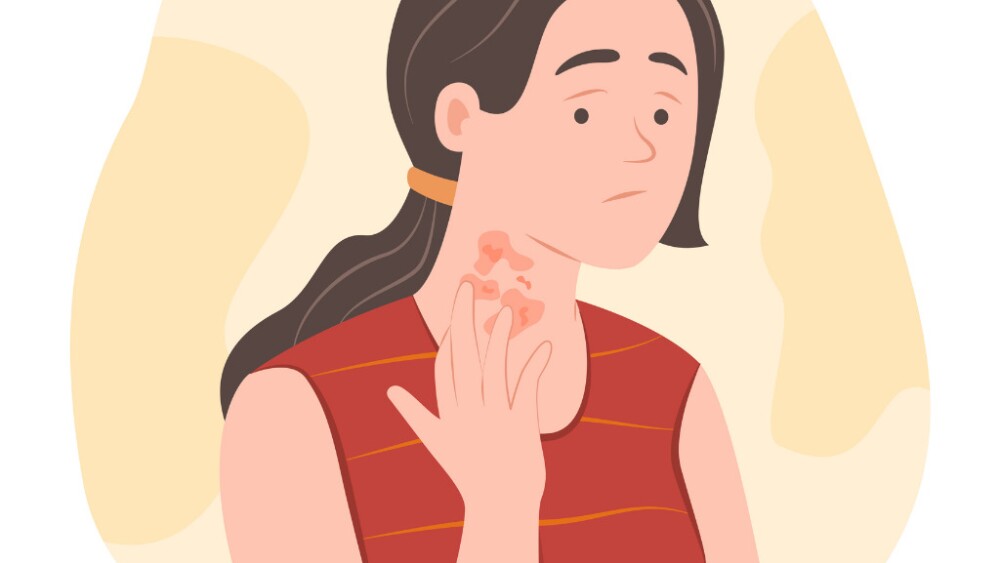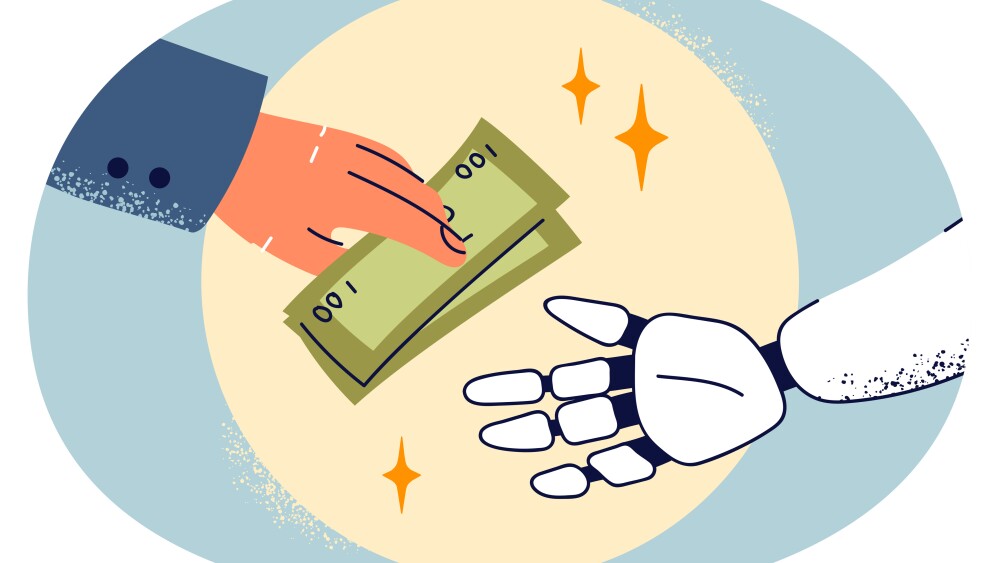Acute Lung Injury Market Outlook 2025-2035:
The 7 major acute lung injury market reached a value of USD 3.3 Billion in 2024. Looking forward, IMARC Group expects the 7MM to reach USD 4.9 Billion by 2035, exhibiting a growth rate (CAGR) of 4.09% during 2025-2035. The market is expanding due to the rising use of extracorporeal support, such as extracorporeal membrane oxygenation and carbon dioxide removal, to enhance survival in severe acute lung injury patients. Advances in targeted therapies and new treatments are also propelling growth.
Advances in Early Detection and Diagnostic Technologies: Driving the Acute Lung Injury Market
Advancements in early detection and diagnostic technologies are driving the acute lung injury (ALI) market by enabling timely diagnosis, improving patient outcomes, and expanding treatment options. Recent progress in biomarker research, imaging techniques, and AI-driven diagnostics is transforming the field, allowing faster and more precise ALI diagnosis. A key development in ALI detection is identifying reliable biomarkers, including surfactant proteins, inflammatory cytokines, and endothelial injury markers. Researchers are investigating blood-based and exhaled breath biomarkers for early-stage detection, enabling timely treatment before severe lung damage develops. Additionally, high-resolution imaging methods like computed tomography (CT) and lung ultrasound have enhanced diagnostic accuracy by offering detailed evaluations of lung inflammation and fluid buildup. AI-powered diagnostic systems and machine learning algorithms are further improving early detection. AI-driven imaging analysis rapidly detects lung abnormalities, assesses disease progression, and supports risk stratification. Furthermore, point-of-care diagnostic devices and non-invasive monitoring systems are improving early detection and minimizing treatment delays. As these technologies advance, they are expected to boost market growth by increasing diagnosed cases and enhancing patient outcomes. The combination of advanced diagnostics with emerging treatments will further improve ALI management, leading to higher survival rates and a more effective healthcare strategy for addressing this critical condition.
Request a PDF Sample Report: https://www.imarcgroup.com/acute-lung-injury-market/requestsample
Development of Novel Therapies and Pharmacological Treatments: Contributing to Market Expansion
The acute lung injury market is growing with the introduction of novel therapies and pharmacological treatments aimed at reducing its high morbidity and mortality rates. A key advancement in ALI treatment is the development of anti-inflammatory and immunomodulatory drugs that limit lung damage. Therapies targeting cytokine storms, including interleukin-6 (IL-6) and tumor necrosis factor-alpha (TNF-α) inhibitors, have demonstrated potential in controlling excessive immune responses and slowing disease progression. Additionally, mesenchymal stem cell (MSC) therapy is emerging as a regenerative approach, with studies showing its potential to repair lung tissue, reduce inflammation, and enhance oxygenation. Pharmacological treatments focused on stabilizing the endothelial barrier and minimizing pulmonary edema are also gaining interest. Drugs targeting vascular endothelial growth factor (VEGF) and matrix metalloproteinases (MMPs) are being investigated for their role in maintaining lung function. Moreover, innovations in drug delivery systems, such as nanoparticle-based formulations and inhalable therapeutics, are enhancing the effectiveness and precision of ALI treatments. With increasing research investment and regulatory backing for breakthrough therapies, the ALI market is poised for further growth. The combination of novel pharmacological treatments with precision medicine strategies is expected to transform ALI management, providing new opportunities for better patient outcomes and lowering the healthcare burden of this critical condition.
Buy Full Report: https://www.imarcgroup.com/checkout?id=6983&method=809
Emerging Therapies in Acute Lung Injury Market
Citrulline: Asklepion Pharmaceuticals
Citrulline, an amino acid, aids in acute lung injury treatment by boosting nitric oxide (NO) production as an L-arginine precursor. This promotes vasodilation, easing inflammation and oxidative stress in lung tissue, potentially preventing ALI-induced damage. The effect occurs through Nrf2 pathway activation and NLRP3 inflammasome suppression, limiting excessive inflammation and cell death.
Nezulcitinib: Theravance Biopharma
Nezulcitinib, developed by Theravance Biopharma, is an inhaled Janus kinase (JAK) inhibitor designed for acute lung injury and acute respiratory distress syndrome. It selectively targets JAK1, a key protein in inflammatory pathways. By inhibiting JAK1, nezulcitinib reduces pro-inflammatory cytokines like interleukin-6 (IL-6) and tumor necrosis factor-alpha (TNF-α), which drive lung inflammation and damage. Its localized inhaled delivery limits systemic exposure, enhancing safety while providing targeted anti-inflammatory effects to the lungs, potentially improving oxygenation and lung function in ALI patients.
Detailed list of emerging therapies in Acute Lung Injury is provided in the final report…
Key Players in Acute Lung Injury Market:
The key players in the Acute Lung Injury market that are in different phases of developing different therapies are Asklepion Pharmaceuticals, Theravance Biopharma, and Others.
Regional Analysis:
The major markets for acute lung injury include the United States, Germany, France, the United Kingdom, Italy, Spain, and Japan. According to projections by IMARC, The United States has the largest acute lung injury patient pool and the leading treatment market. This results from the growing prevalence of respiratory diseases, including pneumonia and COVID-19-related lung issues, which have intensified the demand for effective ALI therapies, driving market expansion and innovation in treatment approaches.
Moreover, advancements in diagnostic tools and treatment methods are crucial drivers. Biomarker-based tests, high-resolution imaging, and AI-driven predictive analytics enhance early detection for timely intervention. Innovative therapies, including anti-inflammatory agents, immunomodulators, and regenerative treatments like mesenchymal stem cell (MSC) therapy, are reshaping ALI management by providing more precise and effective treatment solutions.
Besides this, the U.S. has a robust regulatory and funding framework, with organizations like the NIH and BARDA supporting respiratory disease research. The FDA has expedited approvals for promising ALI treatments, accelerating innovation in drug development and facilitating the introduction of advanced therapies to improve patient outcomes.
Key information covered in the report.
Base Year: 2024
Historical Period: 2019-2024
Market Forecast: 2025-2035
Countries Covered
This report offers a comprehensive analysis of current acute lung injury marketed drugs and late-stage pipeline drugs.
Ask Our Expert & Browse Full Report with TOC: https://www.imarcgroup.com/acute-lung-injury-market/toc
In-Market Drugs
Angioedema Market: The 7 major angioedema markets are expected to exhibit a CAGR of 7.01% during 2025-2035.
B-Cell Non-Hodgkin Lymphoma Market: The 7 major B-cell non-Hodgkin lymphoma markets are expected to exhibit a CAGR of 5.83% during 2024-2034.
Short Bowel Syndrome Market: The 7 major short bowel syndrome markets reached a value of USD 2,433.9 Million in 2024. Looking forward, IMARC Group expects the 7MM to reach USD 4,547.5 Million by 2035, exhibiting a growth rate (CAGR) of 5.85% during 2025-2035.
Attention Deficit Hyperactivity Disorder Market: The 7 major attention deficit hyperactivity disorder markets reached a value of US$ 9.6 Billion in 2023. Looking forward, IMARC Group expects the 7MM to reach US$ 13.6 Billion by 2034, exhibiting a growth rate (CAGR) of 3.23% during 2024-2034.
Chronic Pain Market: The 7 major chronic pain markets reached a value of USD 21.8 Billion in 2024. Looking forward, IMARC Group expects the 7MM to reach USD 29.9 Billion by 2035, exhibiting a growth rate (CAGR) of 2.90% during 2025-2035.
Crohn's Disease Market: The 7 major Crohn’s disease markets reached a value of USD 8,587.9 Million in 2024. Looking forward, IMARC Group expects the 7MM to reach USD 12,052.2 Million by 2035, exhibiting a growth rate (CAGR) of 3.12% during 2025-2035.
Contact US
IMARC Group
134 N 4th St. Brooklyn, NY 11249, USA
Email: Sales@imarcgroup.com
Tel No:(D) +91 120 433 0800
Phone Number: - +1 631 791 1145, +91-120-433-0800
The 7 major acute lung injury market reached a value of USD 3.3 Billion in 2024. Looking forward, IMARC Group expects the 7MM to reach USD 4.9 Billion by 2035, exhibiting a growth rate (CAGR) of 4.09% during 2025-2035. The market is expanding due to the rising use of extracorporeal support, such as extracorporeal membrane oxygenation and carbon dioxide removal, to enhance survival in severe acute lung injury patients. Advances in targeted therapies and new treatments are also propelling growth.
Advances in Early Detection and Diagnostic Technologies: Driving the Acute Lung Injury Market
Advancements in early detection and diagnostic technologies are driving the acute lung injury (ALI) market by enabling timely diagnosis, improving patient outcomes, and expanding treatment options. Recent progress in biomarker research, imaging techniques, and AI-driven diagnostics is transforming the field, allowing faster and more precise ALI diagnosis. A key development in ALI detection is identifying reliable biomarkers, including surfactant proteins, inflammatory cytokines, and endothelial injury markers. Researchers are investigating blood-based and exhaled breath biomarkers for early-stage detection, enabling timely treatment before severe lung damage develops. Additionally, high-resolution imaging methods like computed tomography (CT) and lung ultrasound have enhanced diagnostic accuracy by offering detailed evaluations of lung inflammation and fluid buildup. AI-powered diagnostic systems and machine learning algorithms are further improving early detection. AI-driven imaging analysis rapidly detects lung abnormalities, assesses disease progression, and supports risk stratification. Furthermore, point-of-care diagnostic devices and non-invasive monitoring systems are improving early detection and minimizing treatment delays. As these technologies advance, they are expected to boost market growth by increasing diagnosed cases and enhancing patient outcomes. The combination of advanced diagnostics with emerging treatments will further improve ALI management, leading to higher survival rates and a more effective healthcare strategy for addressing this critical condition.
Request a PDF Sample Report: https://www.imarcgroup.com/acute-lung-injury-market/requestsample
Development of Novel Therapies and Pharmacological Treatments: Contributing to Market Expansion
The acute lung injury market is growing with the introduction of novel therapies and pharmacological treatments aimed at reducing its high morbidity and mortality rates. A key advancement in ALI treatment is the development of anti-inflammatory and immunomodulatory drugs that limit lung damage. Therapies targeting cytokine storms, including interleukin-6 (IL-6) and tumor necrosis factor-alpha (TNF-α) inhibitors, have demonstrated potential in controlling excessive immune responses and slowing disease progression. Additionally, mesenchymal stem cell (MSC) therapy is emerging as a regenerative approach, with studies showing its potential to repair lung tissue, reduce inflammation, and enhance oxygenation. Pharmacological treatments focused on stabilizing the endothelial barrier and minimizing pulmonary edema are also gaining interest. Drugs targeting vascular endothelial growth factor (VEGF) and matrix metalloproteinases (MMPs) are being investigated for their role in maintaining lung function. Moreover, innovations in drug delivery systems, such as nanoparticle-based formulations and inhalable therapeutics, are enhancing the effectiveness and precision of ALI treatments. With increasing research investment and regulatory backing for breakthrough therapies, the ALI market is poised for further growth. The combination of novel pharmacological treatments with precision medicine strategies is expected to transform ALI management, providing new opportunities for better patient outcomes and lowering the healthcare burden of this critical condition.
Buy Full Report: https://www.imarcgroup.com/checkout?id=6983&method=809
Emerging Therapies in Acute Lung Injury Market
Citrulline: Asklepion Pharmaceuticals
Citrulline, an amino acid, aids in acute lung injury treatment by boosting nitric oxide (NO) production as an L-arginine precursor. This promotes vasodilation, easing inflammation and oxidative stress in lung tissue, potentially preventing ALI-induced damage. The effect occurs through Nrf2 pathway activation and NLRP3 inflammasome suppression, limiting excessive inflammation and cell death.
Nezulcitinib: Theravance Biopharma
Nezulcitinib, developed by Theravance Biopharma, is an inhaled Janus kinase (JAK) inhibitor designed for acute lung injury and acute respiratory distress syndrome. It selectively targets JAK1, a key protein in inflammatory pathways. By inhibiting JAK1, nezulcitinib reduces pro-inflammatory cytokines like interleukin-6 (IL-6) and tumor necrosis factor-alpha (TNF-α), which drive lung inflammation and damage. Its localized inhaled delivery limits systemic exposure, enhancing safety while providing targeted anti-inflammatory effects to the lungs, potentially improving oxygenation and lung function in ALI patients.
| Drug Name | Company Name | MOA | ROA |
| Citrulline | Asklepion Pharmaceuticals | Amino acid replacements | Intravenous |
| Nezulcitinib | Theravance Biopharma | Janus kinase inhibitors | Oral |
Key Players in Acute Lung Injury Market:
The key players in the Acute Lung Injury market that are in different phases of developing different therapies are Asklepion Pharmaceuticals, Theravance Biopharma, and Others.
Regional Analysis:
The major markets for acute lung injury include the United States, Germany, France, the United Kingdom, Italy, Spain, and Japan. According to projections by IMARC, The United States has the largest acute lung injury patient pool and the leading treatment market. This results from the growing prevalence of respiratory diseases, including pneumonia and COVID-19-related lung issues, which have intensified the demand for effective ALI therapies, driving market expansion and innovation in treatment approaches.
Moreover, advancements in diagnostic tools and treatment methods are crucial drivers. Biomarker-based tests, high-resolution imaging, and AI-driven predictive analytics enhance early detection for timely intervention. Innovative therapies, including anti-inflammatory agents, immunomodulators, and regenerative treatments like mesenchymal stem cell (MSC) therapy, are reshaping ALI management by providing more precise and effective treatment solutions.
Besides this, the U.S. has a robust regulatory and funding framework, with organizations like the NIH and BARDA supporting respiratory disease research. The FDA has expedited approvals for promising ALI treatments, accelerating innovation in drug development and facilitating the introduction of advanced therapies to improve patient outcomes.
Key information covered in the report.
Base Year: 2024
Historical Period: 2019-2024
Market Forecast: 2025-2035
Countries Covered
- United States
- Germany
- France
- United Kingdom
- Italy
- Spain
- Japan
- Historical, current, and future epidemiology scenario
- Historical, current, and future performance of the acute lung injury market
- Historical, current, and future performance of various therapeutic categories in the market
- Sales of various drugs across the acute lung injury market
- Reimbursement scenario in the market
- In-market and pipeline drugs
This report offers a comprehensive analysis of current acute lung injury marketed drugs and late-stage pipeline drugs.
Ask Our Expert & Browse Full Report with TOC: https://www.imarcgroup.com/acute-lung-injury-market/toc
In-Market Drugs
- Drug Overview
- Mechanism of Action
- Regulatory Status
- Clinical Trial Results
- Drug Uptake and Market Performance
- Drug Overview
- Mechanism of Action
- Regulatory Status
- Clinical Trial Results
- Drug Uptake and Market Performance
Angioedema Market: The 7 major angioedema markets are expected to exhibit a CAGR of 7.01% during 2025-2035.
B-Cell Non-Hodgkin Lymphoma Market: The 7 major B-cell non-Hodgkin lymphoma markets are expected to exhibit a CAGR of 5.83% during 2024-2034.
Short Bowel Syndrome Market: The 7 major short bowel syndrome markets reached a value of USD 2,433.9 Million in 2024. Looking forward, IMARC Group expects the 7MM to reach USD 4,547.5 Million by 2035, exhibiting a growth rate (CAGR) of 5.85% during 2025-2035.
Attention Deficit Hyperactivity Disorder Market: The 7 major attention deficit hyperactivity disorder markets reached a value of US$ 9.6 Billion in 2023. Looking forward, IMARC Group expects the 7MM to reach US$ 13.6 Billion by 2034, exhibiting a growth rate (CAGR) of 3.23% during 2024-2034.
Chronic Pain Market: The 7 major chronic pain markets reached a value of USD 21.8 Billion in 2024. Looking forward, IMARC Group expects the 7MM to reach USD 29.9 Billion by 2035, exhibiting a growth rate (CAGR) of 2.90% during 2025-2035.
Crohn's Disease Market: The 7 major Crohn’s disease markets reached a value of USD 8,587.9 Million in 2024. Looking forward, IMARC Group expects the 7MM to reach USD 12,052.2 Million by 2035, exhibiting a growth rate (CAGR) of 3.12% during 2025-2035.
Contact US
IMARC Group
134 N 4th St. Brooklyn, NY 11249, USA
Email: Sales@imarcgroup.com
Tel No:(D) +91 120 433 0800
Phone Number: - +1 631 791 1145, +91-120-433-0800






